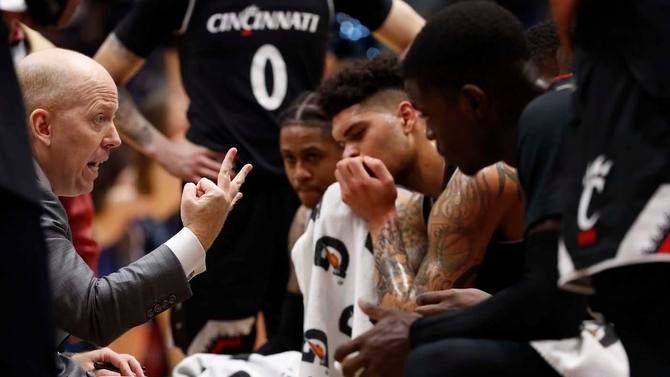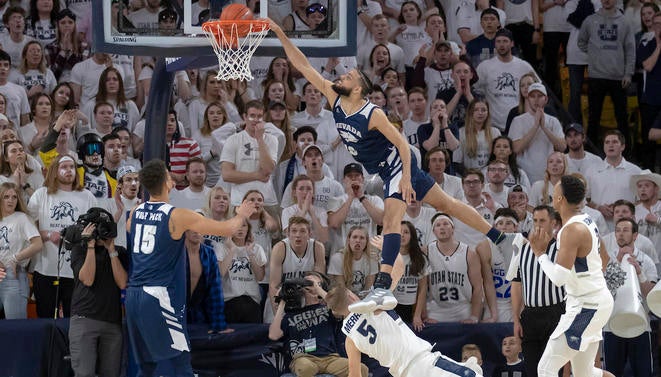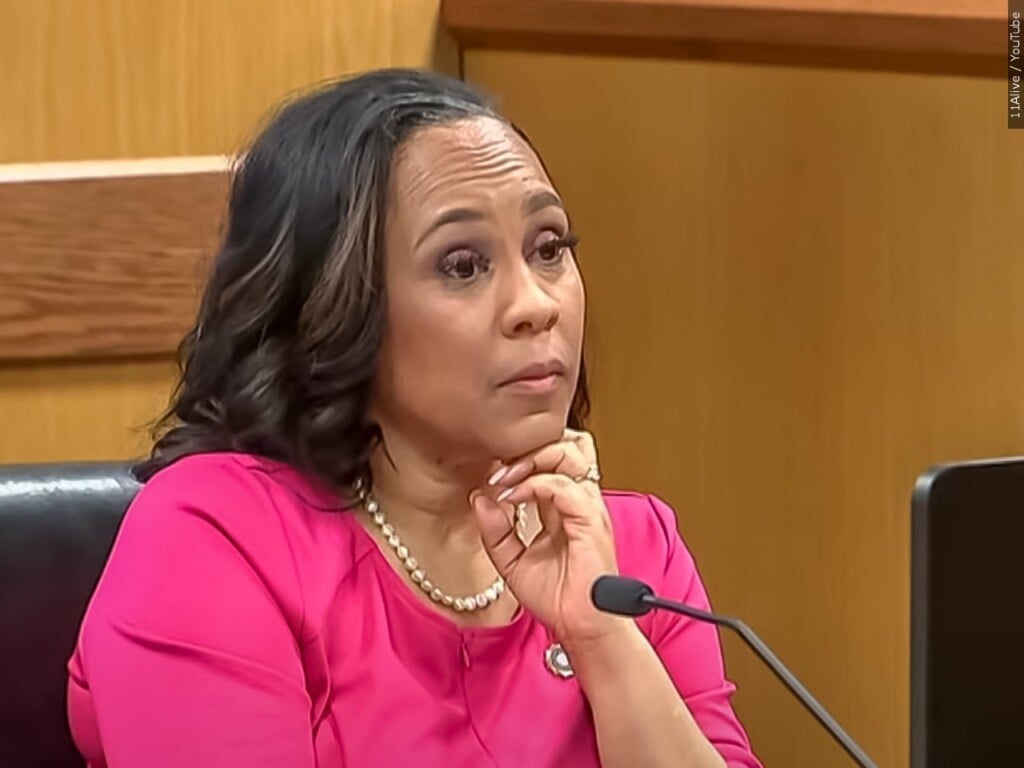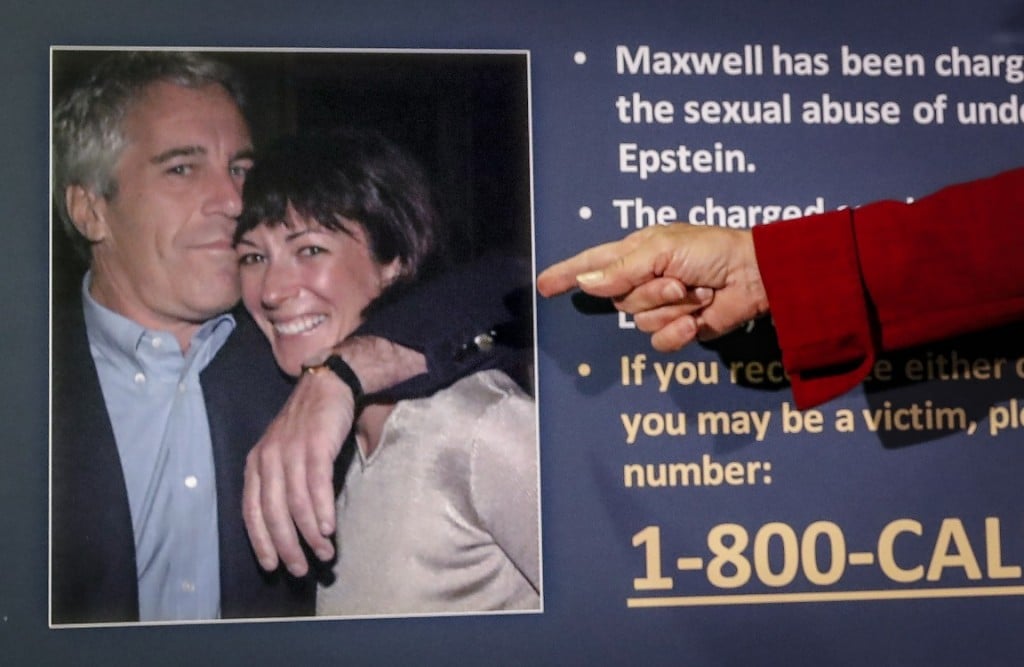The Court Report: Cincinnati is the best, most reliable college basketball program that nobody talks about
What do Kansas, Duke, Michigan State, Gonzaga and North Carolina have in common? Something that won’t surprise you: they’re the only schools that, as of Selection Sunday, will have made the NCAA Tournament at least nine straight seasons. Kansas leads the way with 30 consecutive appearances, while Duke is at 24, Michigan State 22, Gonzaga 21 and UNC at nine.
You realize Cincinnati is that group as well though, right? It’s the only other team at the table with those bluebloods and big national brands. For the ninth straight year, Mick Cronin’s Bearcats are on their way to another comfortable seed in the Big Dance, doing so in largely unheralded fashion. Foolishly, Cincinnati was underestimated yet again back in the preseason. The 20th-ranked Bearcats have responded by winning 25 of their 29 games in 2018-19, the 30th coming Thursday night at No. 25 UCF.
Then Cincy will wrap up the regular season Sunday by hosting No. 12 Houston.
It’s been a pretty good year for the American Athletic Conference, even if the league hasn’t been given quite enough recognition. Cincy, Houston and UCF all project as NCAA tourney teams. Temple could crack in as well. If the American sends four to the NCAAs, it will mark the third time in its six years it punched that many tickets.
“People underestimated us this year, and I don’t think that was really fair to my players or to my program,” Cronin told me. “I would say the same for Houston. We’ve still been disrespected nationally. We’ve got teams with nine losses that are ranked. I don’t understand it.”
“We’ve still been disrespected nationally.”Cincinnati coach Mick Cronin
Cincinnati has been the landlord of its league in a way almost no other teams can match. The Bearcats have won 158 games (and counting) since the conference formed in 2013. There is no close second place. Cincy outpaces next-best Houston by 31 wins. It beats UConn by 37 and Memphis by 39. UC has been as dominant as any team in any league over the past half-dozen years outside of Kansas and Gonzaga. It ranks top 10 in victories across college hoops in that span, as well.
But the Bearcats don’t get that rep and Cronin knows why: There hasn’t been a Final Four run — not even an Elite Eight charge.
“Do people care about people that graduate players and win, or do they want to know who’s getting drafted in the lottery and who’s winning the title?” he said.
Heck, even consistent showings in the Sweet 16 might have helped Cincinnati, but the school has been a letdown on the big stage. The Bearcats earned a No. 2 seed last season, only to blow their second-round game against Nevada and provide one of the biggest collapses in tournament history. Cronin said the loss was painful, but he’s not the type to stew on those results.
“You can’t get caught up in it, you’ll drive yourself completely nuts,” he said.
Cincinnati’s average seed the past eight years is 6.5. Good. But there’s been three one-and-done showings and only one Sweet 16 appearance. Because Cincy has not been a March power, the AAC has suffered as well. The league really needs two teams to crack through to the second weekend. That’s happened only once, in 2014 when UConn won the national title as a 7 seed.
“I get it,” Cronin said. “The score is what it is. For guys like me, I’m not the only one, until you make the tournament run you’re not going to get the respect that others do.”
Perhaps a break will come this season. The Bearcats are very good on defense yet again (No. 20 at KenPom) and now boast a scoring alpha, Jarron Cumberland, who’s a big-body guard/forward that makes 41.1 percent of his 3s. Cumberland is one of six players that has at least three years of experience, which is Cronin’s concoction for consistency.
“For schools like Cincinnati vs. schools like a Kentucky or a Duke, you have got to stay older any way,” Cronin said. “So you’ve got to redshirt players, you have to make sure you’re going to recruit guys in an honest way so they know the score so they’re not transferring. Because if you have a revolving door, you can’t build.”
Cincinnati is also one of the few schools that has not taken a fifth-year grad transfer since Cronin’s been there. His philosophy on the trend runs counter to most.
“I really hope I never have to, because that means you’re really desperate at a position,” Cronin said. “And if you do walk down that alley, you bring that fifth-year guy in, he plays and your freshman that you told you loved him, comes in — he signed early. The other guy, you signed him in May. Now you play the fifth-year guy, the freshman gets pissed off. The fifth-year guy graduates, the freshman transfers. And I’m just going to tell you, it’s happened to a lot of guys, and it’s a vicious cycle.”
Of course Cronin would like to have one-and-done types at Cincinnati, but the program isn’t built for that and doesn’t attract top-25 talent in most years. Perhaps Penny Hardaway and Dan Hurley will turn the AAC into a five-star destination in the long term, but for now that switch hasn’t trickled down.
Cronin and his staff have to identify the guys who have humility at 17 years old, who are embracing of a tougher opportunity than maybe other spots. But here’s the best selling point: Cronin can essentially guarantee his recruits are going to experience the NCAA Tournament every season.
Few coaches can factually claim the same. The ones who can are either in the Hall of Fame or are on their way.

Is this finally the year for Belmont to win in the tourney?
Not enough has been made about Belmont’s NCAA Tournament bona fides this season. The Bruins finished tied atop the OVC with a 16-2 record alongside Murray State — but also won the only meeting between the two teams, at Murray State, on their way to an overall 25-4 mark. Belmont’s a sturdy 5-2 in Quad 1 and Quad 2 games. It’s won 12 road games, which is tied for the most in college basketball.
Belmont has more road wins than Texas, TCU, Indiana, Minnesota and NC State combined. It’s played a competitive nonconference schedule, ranks 44th in the Massey Composite, 45th in the NET and 51st at KenPom. With a double bye in the OVC tournament, Belmont needs just one win to get into the title game; the OVC’s auto bid is the first handed out, and so we’ll know No. 1 of 68 teams in this year’s field by Saturday night.
Will it be Rick Byrd’s Bruins? If they get there by auto or by at-large, it will mark the eighth time in program history (all since 2006) Belmont’s had its name called on Selection Sunday. Byrd, who recently won his 800th career game, is regarded by his peers as a top-20 coach. He’s also led Belmont to 11 or more league wins every season since 2003. That is preposterous.
But Byrd and Belmont don’t have an NCAA Tournament win yet. Might that change this season?
“I don’t know where this team stacks up,” Byrd said in comparison to his past ones. “We’ve got two really good seniors, but besides that, we’re extremely young. It would be a first-time experience for every single guy, but I do think we have more varied offensive weapons than we’ve ever had.”
Belmont ranks second in the country in effective field goal percentage, seventh in assist rate and scored more points per game (88.3) than every team except Gonzaga (89.8).
“I still think that our best chance was the 2010-11 team that won 30 games, led the country in scoring margin and played a lot of guys, played Wisconsin in the first round, coming off a poor loss [in the Big Ten tournament], which probably hurt us,” Byrd said.
Belmont plays a four-out-one-in style, and it’s been highly effective for decades. Senior Dylan Windler (21.1 ppg, 10.3 rpg), a 6-foot-8 guy that’s got a real chance to play in the NBA, has been the core. Byrd said if not for a once-in-a-generation sensation like Murray State’s Ja Morant, Windler would have been the best player in the OVC every season he was in college.
Belmont has finished top three in 2-point field goal percentage seven straight seasons. It really seems only a matter of time before the Bruins finally get that first-round Big Dance victory, a win that almost no coaches will consider an upset.
“I don’t spend a lot of time thinking about my place in the game or what’s good for my career when it’s all said and done, and it’s simply because the team that you have and that your’e coaching and the young men you care about become so much more important than the personal stuff,” Byrd said. “Those other things will add up. I know it seems difficult that we’re 0-7 when we get there, but there’s a lot of really good coaches that are 0-1 or 0-2. When you’re at a mid-major and in a conference like ours, you’re generally going to be a 14 or 15 unless you have an exceptional team.”
This I assure you: there is not one opposing coach who, if his team winds up being opposite to Belmont in the first round, is going to be celebrating.
Predicting all 32 league tourney champs
Championship Fortnight got underway on Monday, officially, with the quarterfinals of the Atlantic Sun Tournament. For 14 straight days, college basketball will have league tournaments play out and deliver 32 automatic bids. Ah, March. It’s sure to bring some memorable endings and unpredictable outcomes. Here’s my prognostication for all 32 small-bracket champs before we get to the big one 13 days from now.
Teams with an asterisk next to their name are ones I’m labeling as bid thieves, with the at-large potentially going to the team in parentheses.
America East: Vermont
American Athletic Conference: Cincinnati
Atlantic 10: Dayton* (VCU)
ACC: Virginia
Atlantic Sun: Liberty
Big 12: Kansas
Big East: Marquette
Big Sky: Northern Colorado
Big South: Campbell
Big Ten: Michigan State
Big West: UC Irvine
CAA: Charleston
Conference USA: UTSA
Horizon League: Northern Kentucky
Ivy League: Harvard
MAAC: Rider
MAC: Buffalo
MEAC: North Carolina Central
Missouri Valley: Southern Illinois
Mountain West: Nevada
Northeast: St. Francis (PA)
Ohio Valley: Jacksonville State* (Belmont)
Pac-12: Oregon* (Washington)
Patriot League: Bucknell
SEC: Tennessee
SoCon: UNC Greensboro* (Wofford)
Southland: Sam Houston State
SWAC: Texas Southern
Summit League: South Dakota State
Sun Belt: Texas State
WCC: Gonzaga
WAC: New Mexico State
And when you inevitably hear commentators mention how hard it is for a team to beat the same team three times in a season, know that it is not. Proof:
Top bubble games forthcoming
This penultimate posting of the Court Report wants to help you keep your college basketball interests and curiosities organized. Be sure to check in daily with Jerry Palm’s Bracketology outlook and his bubble watch. In terms of what’s upcoming, here are many of the most pressing bubble games on tap Wednesday, Thursday and Saturday. (Bubble teams italicized.)
Wednesday: Seton Hall vs. Marquette, 6:30 p.m. ET
Wednesday: Florida vs. LSU, 7 p.m. ET
Wednesday: Georgetown at DePaul, 8:30 p.m. ET
Wednesday: Clemson at Notre Dame, 9 p.m. ET
Thursday: Temple at Connecticut, 7 p.m. ET
Thursday: Indiana at Illinois, 8 p.m. ET
Saturday: Clemson vs. Syracuse, noon ET
Saturday: TCU at Texas, noon ET
Saturday: Temple vs. UCF, 4 p.m. ET
Saturday: Arizona State at Arizona, 4 p.m. ET
Saturday: Xavier vs. St. John’s, 5 p.m. ET
Mid-major teams whose placement on the bubble will depend on if they win their league and/or if they can win at least a game in their respective conference tournaments: Belmont, Murray State, Lipscomb, Old Dominion, New Mexico State, UNC Greensboro.
@ me
Have a question, curiosity or complaint? Do @ me. Lob your question my way on Twitter.
Let’s focus on the good. Here are a lot of seniors whose best season has been their last, most of whom will play in the NCAAs: Michigan State’s Matt McQuaid, Furman’s Matt Rafferty, UNC’s Cam Johnson, Campbell’s Chris Clemons, South Dakota State’s Mike Daum, Purdue’s Ryan Cline, Iowa State’s Marial Shayok, Belmont’s Dylan Windler, Florida State’s Terance Mann, Buffalo’s C.J. Massinburg, Cincinnati’s Justin Jenifer and Hofstra’s Justin Wright-Foreman.
This is really hard to forecast because as teams add two, three, four and even five more games to their case files, the teams around them in bracket forecasts will change, too. Take a look at Jerry Palm’s latest bracket forecast. The short answer to your question is: any team seeded 11th or higher in that bracket right now is in if it makes its conference title game. End of story. From there, things get trickier. My three strongest nominees for teams that are outside the bracket looking in and have a shot of making their title game and getting in in the process: Temple, Seton Hall, Murray State.
Thought about this last night. My answer is four seasons. Kansas finishes atop the Big 12 in 2020, 2021, 2022 and 2023.
The Red Raiders can win it all. They have had the No. 1-rated defense this season more often than not. They have a terrific coach. They have a top-10 pick (Jarrett Culver). And yet, in your bracket pool later this month, almost no one will take them. Huge value in TTU.
Among relevant teams, you look at the top 120 teams at KenPom, there are no humongous turnarounds. In fact, Iowa is probably the top candidate. Won 14 games a season ago, and should end with at least 10 more than that.
The NCAA should create legislation, but it’s likely to remain in the hands of the conferences. And I can almost guarantee you that court storming is still going to happen a decade from now. Look at this idiot just asking for it with Matt Haarms last night.
Buzzer beaters
- HUGE shoutout to Cal women’s player Kristine Anigwe, who had a 30/30 game (32 points, 30 rebounds) in a win over Washington State over the weekend. It was the first 30/30 game in women’s basketball since 2002.
- An almost-as-impressive streak that is ending: Kansas will not be a No. 1 or No. 2 seed for the first time in 10 years.
- Gonzaga wrapped its fifth undefeated season in WCC play over the weekend. The Bulldogs beat their intra-conference opponents by an average of 27.0 points, the most by any team in men’s D-I since 1990-91 UNLV.
- I don’t think Indiana is getting into the NCAAs, but it’s almost definitely going to the NIT. NIT guru John Templon pointed out on Twitter that in the previous 12 seasons — since the NCAA took control of the NIT — the worst record for an NIT team was UNC’s 16-16 squad in 2010. So if the Hoosiers wind up landing at .500, they’re probably going because of their top-level Ws.
- If Buffalo beats Bowling Green Friday night, the Bulls and will end the season matched with Tennessee for the longest active home winning streak in college hoops: 26 games.
- What an absolutely fantastic moment and surprise for Texas Tech senior Brandone Francis. If you haven’t watched this yet, it will uplift your day.
Final shot
This, unfortunately, was called a charge on Nevada’s Caleb Martin.






Leave a Reply